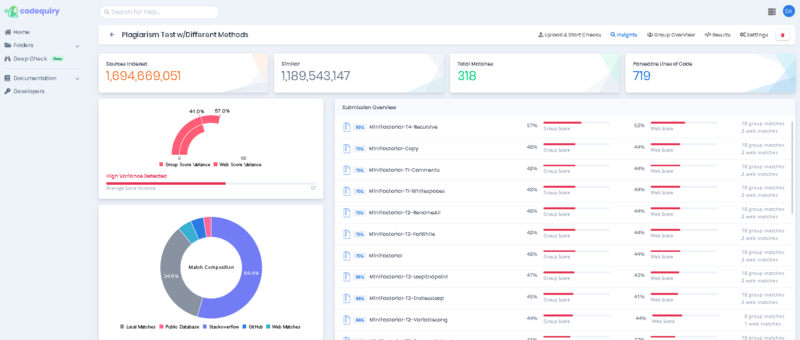
Codequiry releases updated insights page
Codequiry has greatly expanded its insights page to provide better understanding of code results. Lack of readability of code plagiarism detection results has been one of the largest issues of traditional code plagiarism checkers. One of the main advantages of the Codequiry plagiarism checker for code is that it details each submissions percentage likelihood of code plagiarism. While other code checkers just provided estimated similarity scores, Codequiry provides a rich and detailed insights page. This insights page combines the power of both web and peer results into a simple table. The synergy of having both group and web matches together reduces the workload of interpreting code results. The Codequiry insights page algorithm automatically sorts the individual code samples that are the most suspected of plagiarism.
Many educators and large organizations lack the time to be able to review a bulk number of coding submissions consistently for code copying. For organizations with many submissions, sorting through that level of code plagiarism would be a demanding task. The level of resources that would be needed to devote to just understanding the meaning could be insurmountable. Before Codequiry, administrators would have to spend hours either manually reviewing for code plagiarism or had to decipher disorganized similarity results. Codequiry is the first plagiarism checker for code that provides visual and specific web and peer matches regardless of the number of submissions.
Below is an example of how easy the insights page can simplify multiple submissions:

